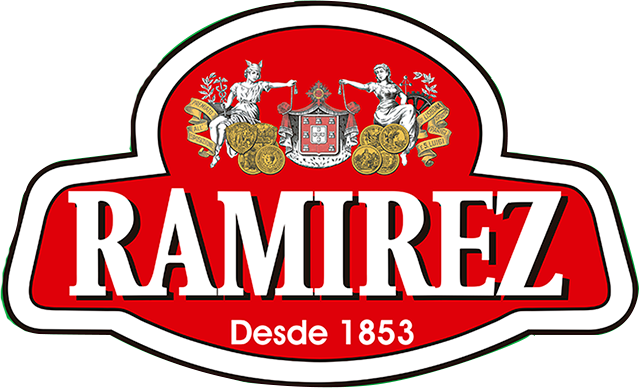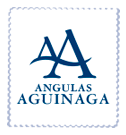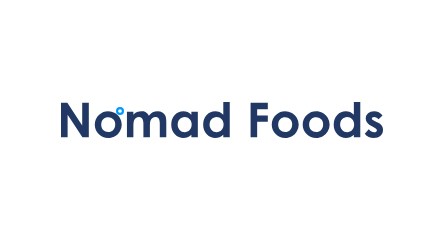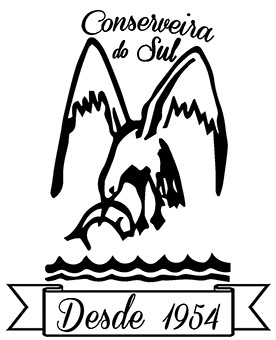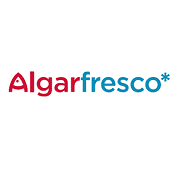Resumo
The global seafood market, which includes the fish distribution market, has been experiencing steady growth, with an expected CAGR of approximately 2.5% from 2020 to 2027, potentially reaching a value of $194 billion by 2027. Despite this growth, there are structural challenges such as the depletion of marine species, affecting sustainability and market dynamics. In 2017, 66% of global fish stocks were at ecologically sustainable levels, a decline from 90% in 1974. The seafood consumption trend has also been on the rise, with per capita consumption increasing from 6 kg in 1950 to 20 kg in 2018, influenced by factors like population growth, higher disposable incomes, and improved distribution channels. Portugal stands out with the highest per capita seafood consumption in the EU at 56.8 kg yearly, attributing to its cultural significance and culinary heritage. The Portuguese market is distinctive, with a preference for traditional products such as cod (bacalhau) and sardines, displaying cyclicality in demand especially during the holiday season. The market exhibits a concentration among a few large players, with small producers struggling to match up. In terms of trade, Portugal imports significantly more seafood than it exports, with Spain being its primary trade partner for imports (36.56%) and exports (61.38%) post-2020. The EU's Common Fisheries Policy (CFP) continues to manage the sector with mechanisms like TACs and MSYs to ensure sustainable fishing practices, and the country's foreign trade has remained steady with a coverage rate around 43% since 2015.
Trends in the Portuguese seafood market
In the analysis of the Portuguese seafood market, we observe a rapidly growing demand for seafood products. At the heart of this surge in consumption are factors like the steady increase in the world population, higher disposable income, changing lifestyles, and evolving food preferences. Despite this growth, challenges such as the depletion of marine species have surfaced, potentially slowing market progress. Portugal stands out in this market due to its strong fish culture, with per capita seafood consumption soaring to impressive heights. In fact, Portugal, with its consumption of around 56 to 60 kilograms per capita annually, ranks among the top consumers globally, far exceeding European counterparts like Spain, which stands at about 40 to 50 kilograms per capita. The seafood market in Portugal is estimated at a significant value, equating to roughly 1 to 2 percent of the country's GDP. The preference among the Portuguese is toward fresh seafood, which dominates consumption. A notable aspect of the market is the high demand for processed seafood, particularly cod, which is deeply enshrined in the cultural fabric of the country, signifying more than half of the processed fish and non-fresh seafood sales. As we look closer at the commercial landscape, the market is heavily influenced by a few large conglomerates. Over the past few years, the number of companies in the processing and conservation of seafood products has seen a decrease, an indication of market consolidation. In terms of the fishing fleet size, there has been a decline from 8,700 to about 7,700 vessels since 2008. From the demographic perspective, the average Portuguese fisherman is middle-aged, working mainly in the Northern or Central regions, which collectively account for more than half of the country's professional fishermen. On the foreign trade front, Portugal's market dynamics are quite pronounced. The nation is more inclined towards imports, with a coverage rate averaging around 43 percent. This entails that Portugal's imports of seafood significantly outnumber exports, with Spain being the primary source of these imports, followed by Sweden and the Netherlands. In conclusion, Portugal's fish distribution market is a testament to the country's robust appetite for seafood, a preference that's rooted in tradition and influenced by the vast array of products available across the globe. Despite structural obstacles and market consolidation, the demand for fish and seafood in Portugal is expected to maintain its upward trajectory, particularly for products like cod which have a special place in the Portuguese diet and culture.
Key Players in the Portuguese Seafood Market
The Portuguese seafood market showcases a dynamic blend of local heritage companies and influential international players that have captured significant market shares through their expertise in processing, distribution, and retailing. As we delve into this segment of the market, we spotlight the leading entities that have made their mark.
- Traditional Canneries Setting the Standard Firstly, Cofaco - Comercial e Fabril de Conservas SA stands out as a beacon of Portuguese tradition in seafood canning. Known for preserving a wide range of seafood, Cofaco has established a strong reputation for quality that resonates with the cultural affinity for fish such as the cherished bacalhau. Ramirez, another bastion of the Portuguese canning industry, echoes this rich heritage. As one of the oldest operating canneries in the world, Ramirez has preserved the time-honored flavors of Portugal, securing its place in the hearts and kitchens across the nation.
- Processing and Distribution Titans Nomad Foods Ltd from the United Kingdom penetrates the market with a vast portfolio of frozen seafood products. As a formidable force in the industry, Nomad Foods caters to a broad European audience, ensuring a consistent supply of processed seafood delights. Grupo Pescanova SA, hailing from Spain, further enriches the Portuguese market with a plethora of seafood offerings. Known for their commitment to quality, Pescanova has carved out a significant niche in both processing and distributing seafood products. Angulas Aguinaga SA, another Spanish entity, boasts a fusion of innovation and tradition in its product line. Specializing in unique seafood preparations, the company has adeptly responded to varying consumer tastes and preferences. Conserveira do Sul Lda remains a notable mention, representing Portugal's vibrant local scene. Though smaller in scale compared to its international counterparts, this company has cemented its presence through dedication to the authenticity and excellence of its processed seafood products.
- Supermarket Sector's Pinnacle Players Pingo Doce stands tall as a supermarket giant in the Portuguese landscape. Its extensive network of stores provides a vital link between consumers and a comprehensive selection of seafood. Pingo Doce's emphasis on quality and accessibility has made it a go-to destination for fresh and processed seafood shopping. These players, with their diverse strengths and specializations, collectively uphold the robust structure of the Portuguese seafood market. From traditional canning methods to global import and export operations, they each play an integral part in fostering a vibrant seafood culture that’s deeply ingrained in Portugal’s identity.
para entender esse mercado
Conteúdo detalhado
 Informações sobre o mercado
Informações sobre o mercado
- Número de páginas : 30 páginas
- Formato : Versões digitais e em PDF
- Última atualização : 01/04/2021
 Resumo e extratos
Resumo e extratos
1 Market overview
1.1 Definition and scope of the study
The fish distribution market covers the consumption and sales of seafood products. The market is dominated by a few large wholesalers, who supply several thousand retailers.
Fish consumption is increasing rapidly worldwide, partly due to increased production, but also due to other factors such as improved distribution channels.
According to European Commission data, Portugal has the third highest per capita consumption of seafood in the world, just behind Norway and South Korea. Current seafood consumption habits are linked to geographical, cultural, historical and political factors. Portuguese seafood consumption is characterized by a great diversity of species and preparation methods, compared to other European countries. Cod (salted and dried), does not exist in Portuguese waters but, due to several historical and cultural factors, it has become the main species in the Portuguese seafood consumption, representing about 38% of the national seafood demand. [Jornal da Economia do Mar]
1.2 A growing world market despite structural obstacles
According to Allied Market Research, the seafood market is expected to grow at a CAGR of approximately *.*% over the period ****-**** to reach $*** billion.
Globally, the market is benefiting from several factors involving demand growth. Some of the factors driving the growth in demand include:
The steady increase in the world ...
1.3 Focus on the European Union
Source: ****
The table above shows which fish are most consumed at a European level ; we can see that tuna accounts for the largest share (***) of consumption, and that the EU consumes an average of *.** kilos of tuna per year.
On the other hand, the highest rate of sufficiency (***), the EU relies ...
1.4 The Portuguese market is strongly rooted in the fish culture
Portugal was in **** the leading country in seafood consumption per capita by value, with *** euros spent on average per Portuguese according to the European Fisheries and Aquaculture Market Observatory (***).
On the other hand, the Portuguese have the highest ratio between spending on fish and meat. Spending on fish and shellfish is ...
1.5 Foreign Trade
In order to analyse Portugal's external trade in fish and seafood, the following UN Comtrade code was used :
**: fish and crustaceans, molluscs and other aquatic invertebrates.
Portugal is more of an importer than an exporter for these products. In fact, in ****, they imported US$ *.** billion worth of fish and seafood ...
2 Analysis of the demand
2.1 Per capita consumption of fish and seafood in Portugal
A study by eUMOFA (***).
Criteria for buying fish and seafood Portugal, ****, in % Source: ****
2.2 Typology of demand according to volumes purchased
Over the period ****-****, there was an average annual decline of *.*% in sales of fresh products, compared to an average annual increase of *.*% in consumption of processed seafood. Fresh seafood sales dropped to ***,*** tons in **** from ***,*** tons in **** and are expected to reach ***,*** tons by ****. Those of processed products, at **,*** tons ...
2.3 Focus on processed seafood
The table below shows the sales of seafood products in Portugal according to industrial processing. Thus, we see that consumers are giving the lion's share to cod, which in **** represented more than **% of sales of fish and non-fresh seafood. Tuna preparations and cans, meanwhile, approached **% of sales, while those of sardines ...
2.4 Holiday season creates a spike in demand
The cultural factor of demand also implies a certain cyclicality of demand, especially for cod/dried cod. Indeed, the bacalhau is a typical Portuguese Christmas meal and households flock to this product during the holiday season. To illustrate this phenomenon, we used Google Trends results for the search for "bacalhau" over ...
3 Market structure
3.1 Industrial fabric and market share
Despite the large number of companies, the market for fish, shellfish and molluscs in Portugal is dominated by a handful of large groups. Indeed, the market suffered a significant decline in the total number of companies following the global crisis of ****, before this figure started to slowly increase in ****. Moreover, ** groups ...
3.2 Distribution of products caught, by product
The table below summarizes the three most caught fish species in Portugal by category, as well as their quantity of tons caught and the percentage of this quantity in the country's total catch in ****:
Source: ****
Portuguese fish and shellfish production patterns can be interpreted by the types of fish caught.
Unsurprisingly, ...
3.3 Geographic and demographic segmentation of fishers
The report of Pordata details the shares of fishers by age and the region in which they registered with the government structure of registered fishers.
Share of each region in the total number of fishers Portugal, ****, in % Source: ****
The northern and Central regions of Portugal account for more than half of ...
3.4 Market value chain
The first step in the supply chain is fishing or aquaculture. Then there is sanitary control of the fish harvest. In the second stage, the fish is processed. The four basic procedures used in the final processing of fish products are heating, freezing, water activity control (***) and finally reach the ...
4 Analysis of the offer
4.1 Main products fished or imported into Portugal
We can repeat the list of the main types of products fished in Portugal, used previously:
Source: ****
The Government of Canada also details the main seafood products imported into Portugal:
Main imported seafood products Portugal, ****, in % Source: ****
4.2 Estimated prices of the products presented
The prices of seafood products depend on their quality and scarcity as well as on the time of year. The table below gives an idea of what these prices can be in supermarkets.
Source: ****
4.3 Ranges are expanding and new products are appearing
Almost a third of the new products launched on the fish and shellfish market in Portugal concern an extension of an existing range: this can be the branding of a product (***).
But it is new products that account for the largest share of launches: **% of seafood product launches are new products. ...
5 Regulation
5.1 Quotas: European management
European fisheries policy
Since ****, the European Fisheries Policy (***) has been responsible for regulating and organizing the entire fisheries sector. Several reforms have been put in place, the most recent of which was applied on January *, ****. According to the European Commission, the CFP has four main areas of action:
fisheries management ; international ...
6 Positioning of the actors
6.1 Segmentation
- Cofaco
- Ramirez & Co Filhos
- Angulas Aguinaga SA
- Nomad Foods Ltd
- Conserveira do Sul Lda
- AlgarFresco
- Pescanova 3
 Lista de gráficos
Lista de gráficos
- Consumo de marisco
- Rotatividade do mercado de frutos do mar
- Tendências globais sobre o estado das populações de peixes marinhos
- Categorias de uso e consumo per capita de mariscos
- Consumo doméstico de frutos do mar frescos (em valor)
Todos os nossos estudos estão disponíveis on-line em formato PDF
Dê uma olhada em um exemplo de nossa pesquisa sobre outro mercado!
Empresas citadas neste estudo
Este estudo contém uma visão geral completa das empresas no mercado, com os últimos números e notícias de cada empresa :
 A escolha deste estudo significa :
A escolha deste estudo significa :
Acesso a mais de 35 horas de trabalho
Nossos estudos são o resultado de mais de 35 horas de pesquisa e análise. O uso de nossos estudos permite que você dedique mais tempo e valor agregado aos seus projetos.
Beneficie-se de 6 anos de experiência e mais de 1.500 estudos setoriais já produzidos
Nossa experiência nos permite produzir estudos abrangentes em todos os setores, inclusive em nichos e mercados emergentes.
Nosso know-how e metodologia nos permitem produzir estudos com uma relação custo-benefício única.
Acesso a vários milhares de artigos e dados pagos
A Businesscoot tem acesso a toda a imprensa econômica paga, bem como a bancos de dados exclusivos para realizar suas pesquisas de mercado (mais de 30.000 artigos e fontes privadas).
Para aprimorar nossas pesquisas, nossos analistas também utilizam indicadores da web (semrush, trends, etc.) para identificar tendências de mercado e estratégias das empresas. (Consulte nossas fontes pagas)
Suporte garantido após a compra
Uma equipe dedicada ao serviço pós-venda, para garantir um alto nível de satisfação. +55 1130424966
Um formato digital projetado para nossos usuários
Você não só tem acesso a um PDF, mas também a uma versão digital desenvolvida para nossos clientes. Essa versão lhe dá acesso a fontes, dados em formato Excel e gráficos. O conteúdo do estudo pode, portanto, ser facilmente recuperado e adaptado à sua maneira.
 Nossas ofertas :
Nossas ofertas :
the fish and seafood market | Portugal
- Quais são os dados sobre a dimensão e o crescimento do mercado?
- O que está a impulsionar o crescimento do mercado e a sua evolução?
- Qual é o posicionamento das empresas na cadeia de valor?
- Como é que as empresas do mercado se distinguem umas das outras?
- Dados provenientes de várias dezenas de bases de dados
Pacote de 5 estudos (-15%) PT Portugal
- 5 relatórios a €75,6 sem IVA por estudo para escolher em nosso catálogo português por 12 meses
- Economize 15% em estudos adicionais adquiridos
- Escolha ser reembolsado por qualquer crédito não utilizado ao final do período de 12 meses (duração do pacote)
Consulte os termos e condições do pacote e o reembolso do crédito não utilizado.






